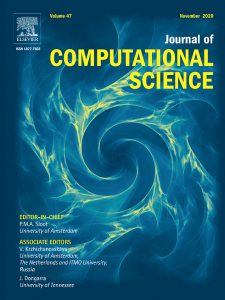 An interesting article titled High fidelity fluid-structure interaction by radial basis functions mesh adaption of moving walls: a workflow applied to an aortic valve has been published on the Journal of Computational Science, available online February 2021, doi: 10.1016/j.jocs.2021.101327.
An interesting article titled High fidelity fluid-structure interaction by radial basis functions mesh adaption of moving walls: a workflow applied to an aortic valve has been published on the Journal of Computational Science, available online February 2021, doi: 10.1016/j.jocs.2021.101327.
Abstract
Fluid-Structure Interaction (FSI) can be investigated by means of non-linear Finite Element Models (FEM), suitable to capture large deflections of structural parts interacting with fluids, and Computational Fluid Dynamics (CFD). High fidelity simulations are obtained using the fine spatial resolution of both the structural and fluid computational grids. A key enabler to have a proper exchange of information between the structural solver and the fluid one is the management of the interface at wetted surfaces where the grids are usually non matching. A class of applications, known also as one-way FSI problems, involves a complex movement of the walls that is known in advance as measured or as computed by FEM, and that has to be imposed at the boundaries during a transient CFD solution. Effective methods for the time marching adaption of the whole computational grid of the CFD model according to the evolving shape of its boundaries are required. A very well established approach consists of a continuum update of the mesh that is regenerated by adding and removing cells to fit the evolution of the moving walls. In this paper, starting from the work originally presented in Meshfree Methods in Computational Sciences, ICCS 2020 [1], an innovative method based on Radial Basis Functions (RBF) mesh morphing is proposed, allowing the retention of the same mesh topology suitable for a continuum update of the shape. The proposed method is exact at a set of given key configurations and relies on shape blending time interpolation between key frames. The study of the complex motion of a Polymeric-Prosthetic Heart Valve (P-PHV) is presented using the new framework and considering as a reference the established approach based on remeshing.
Enjoy the read!
